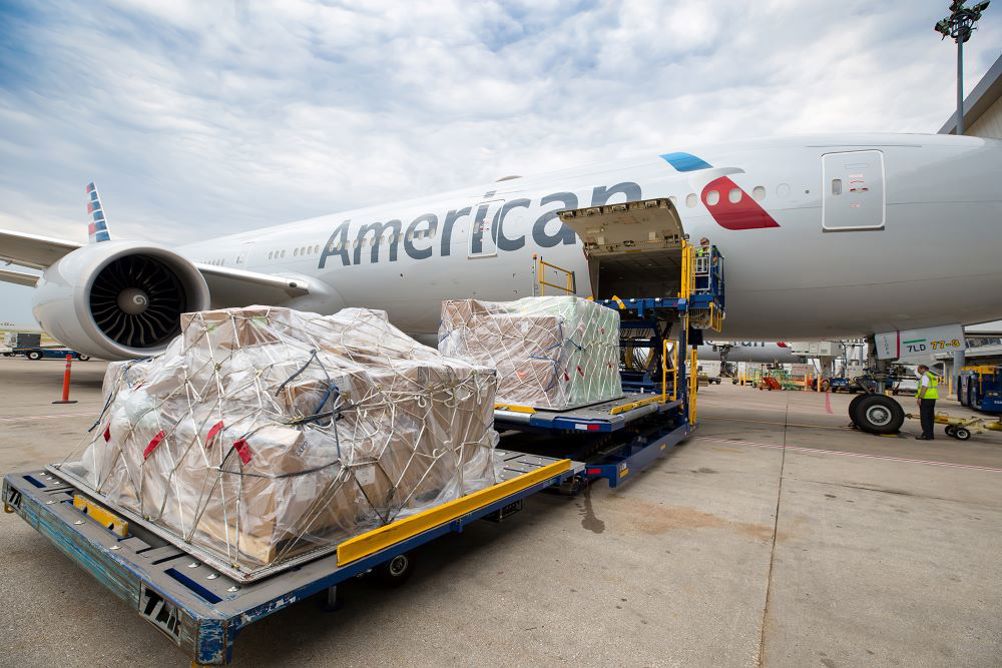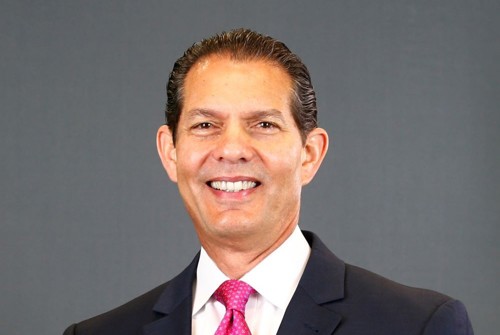
Picture credit: Dallas/Fort Worth International Airport
When Dallas/Fort Worth International Airport was developing its cargo strategy several years ago, it looked at the markets it should be competing in, and it was clear that acting as a gateway between Latin America and Asia was a winning strategy.
Speaking at the IATA World Cargo Symposium, John Ackerman, Executive Vice President - Global Strategy and Development, and Milton De La Paz, Vice President – Airline Relations and Cargo, explained DFW’s cargo strategy.
Knowing no other US airport could compete with DFW’s location, the next part was looking at products, with e-commerce and time- and temperature-sensitive commodities being the priority.
If an airport is going to work with time- and temperature-sensitive products, it needs a cool-chain facility, which DFW lacked at the time so it looked for a partner and picked dnata to operate the facility.
The most recent development is redeveloping the 19th Street cargo facility. Five old buildings were returned to the airport, with four having been demolished and the fifth to go later this year.
These will be replaced with two buildings, one operated by Menzies Aviation and the other by dnata, adding 350,000 square feet of warehouse space and seven Category 6 parking positions when it is completed late next year.
Ackerman says that strategically most US airports, including DFW in the past, outsourced their cargo business or given the land to private developers, who built the buildings, which they owned and operated.
Taking a different approach, Ackerman explains that tenants in cargo facilities are critical to building a proper cargo community so DFW decided to develop, own and operate its own cargo buildings.
He says, “Our vision for that is we will have a direct relationship with all of the cargo companies, those will be our relationships rather than a third-party developer that stands in between the airport and those critical tenants. If we do that, we will have a stronger, more vibrant cargo community that will be better able to serve this industry.”
The buildings represent a departure from the previous strategy, says Ackerman, by providing state-of-the-art cargo buildings and extra parking positions, which makes it the biggest cargo expansion project in the airport’s history.
At present, DFW is handling around one million tons of cargo and most buildings are full with little extra first line space, so this expansion will double capacity.
This is just the first move, there are other expansion projects in the pipeline promises Ackerman.

Community approach
Data sharing across the community is vital, the airport concluded; the industry has talked about digitalisation for a long time but been slow to take action, Ackerman says with a chuckle.
DFW wanted to be leaders in this area and exchanging information securely and seamlessly is essential so Nallian was selected to deploy its data cloud for data sharing.
The first additional application was a slot booking system for trucks because DFW was eager to avoid the congestion affecting other airports, which is not currently an issue but could be depending on the strength of growth.
Ackerman says, “They can book their appointment, their cargo can be ready when they show up with a quick exchange of paperwork and they are on their way with their cargo so that’s our way of making sure that we never have the queues that are really crippling the industry in some of our major competitors. We intend to never have that happen at DFW because we are going to stay ahead by using technology and working with the cargo community.”
To work with the community, the airport’s cargo team looks after stakeholders and provide the best operating and commercial environment.
The team works with airside partners such as handlers and airlines to provide the best ramp environment and with other parties including forwarders to support them commercially.
De La Paz explains, “We work with them to consolidate more freight through our gateway because building gateways with forwarders is how we are all going to win. A rising tide lifts all the boats and we are there to help everybody across the community. I think that is something that has resonated with everybody and they know that working at DFW is different from other airports, that is how we differentiate ourselves as a cargo community airport.”
Ackerman was eager to point out that the airport does not only talk to the private sector but with government agencies such as the Transportation Security Administration, Customs and Border Protection, and the Food and Drug Administration as a lot of agencies have an interest in air cargo.
“When we have a new customer, we will have a meeting where we invite the leaders from those agencies to the meeting with the customer and they talk about what they want to do so they have pre-planned with the agency so nobody is surprised because nobody likes surprises. We found that by bringing our federal government partners in early, we get much better success rates and our customers appreciate that,” he says.

Leading the way
More than half of DFW’s economic impact comes from cargo, supporting thousands of jobs, so it is vital for the airport operator to take an active role in cargo development.
DFW wants to be an airport that welcomes cargo because a lot of airports give passengers the priority and neglect cargo, says Ackerman.
The airport has so much going for it as a cargo hub with room to expand, extensive road links and it serves the fourth largest metropolitan area in the US.
As supply chains are adjusted to reduce dependence on China, Mexico is the biggest beneficiary, which opens up cross-border opportunities for DFW.
When De La Paz attended his very first cargo conference, he sat in on a conference session where an airline representative talked about the importance of an airport working with the community, saying that you have to build an ecosystem to make the airport and community successful.
“We are not perfect but I think we have started to crack the code and I think we do that as well as or better than anybody and I think if you ask around, you will find that the airlines and handlers find us to be a cargo-friendly airport,” he says.
This article was published in the June issue of Air Logistics International, click here to read the digital edition and click here to subscribe.
